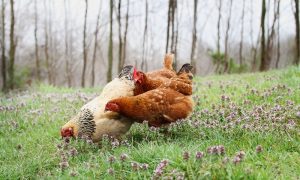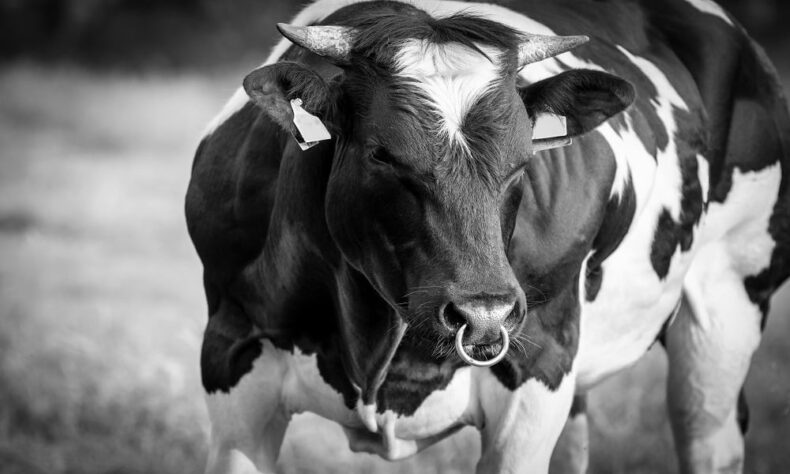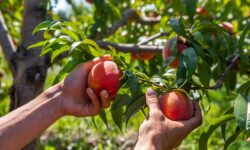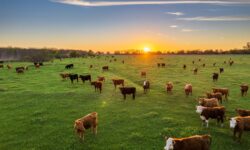Extreme weather throughout the year will cause a shortage of stone fruit in BC: We…
Our sustainability team recently wrote an article which made recommendations to reduce one’s meat consumption based on the impact that animal agriculture has on the environment. As expected, the blog had a lot of engagement, in fact, it had the most feedback we’ve received from a sustainability post! While some comments were supportive, some criticized that the article failed to recognize the beneficial role that livestock can play in a sustainable farming system like Permaculture. We agree with this feedback and so this week we are exploring how animal agriculture can be both harmful and beneficial to the environment.
Seeing the bigger picture
Conventional farming, the way the majority of food is produced, is designed to increase the quantity of food, not quality. As a result, many farms over the past fifty years are using more synthetic inputs (ex. chemical fertilizers and pesticides) and are adopting intensive monoculture (the growth of only one type of crop in a given area), in an effort to produce more with less. This food system’s design is causing unintentional harm to our environment and people.
In the context of animal agriculture, conventional farming systems can cause livestock to be concentrated in small, unhealthy spaces where the landscape is over-utilized and where their waste is not recycled. As a result, livestock raising can cause land degradation and the creation of toxic landscapes due to unmanaged waste.
Some farmers, like the ones we support on Spud.ca, raise animals in a way that mimics natural relationships between animals and the environment in order to raise livestock in a sustainable way. It is when we explore livestock farms like this, which value quality over quantity, that we see the bigger picture: Animal agriculture is not inherently harmful to the environment, but rather it is a food system that values quantity first that can be (1).
How does permaculture value quality?
Defined in the mid 1970s, the term “permaculture” means the careful design of sustainable farming practices that create spaces that are entirely harmonious with the environment and encourage the growth of species diversity as an overall food source (2). Animal agriculture farmers that adopt permacultural practices ensure animal behaviour and animal waste are beneficial to the environment. Here are some examples of how this is possible:
- 1. Grazing: If animals are given enough space to graze in multiple areas, this prevents the landscape from being overused. In addition, grazing can actually improve the soil by dispersing seeds, controlling shrub growth, breaking up soil crusts, and other benefits (3).
- 2. Animal Waste: Manure can be applied to the land as a natural fertilizer to add nutrient value to crops as well as improve soil’s ability to retain water (4).
In arid climates, the proper management of these natural animal behaviours, among others, can effectively prevent agricultural landscapes from becoming deserts. In wetter climates, this sustainable management of livestock can build healthy ecosystems (5).
So, should you eat meat?
Although there are still a large handful of different versions of animal agriculture that have not been mentioned, you now have a brief overview of both sides. If you missed the first blog about this topic, you can read it here.
In terms of making food choices, we recommend that you do your own research about where your food comes from and listen to your body! Eat food that you feel best reflects your values and supports a balanced, nutritious diet.

Sources:
(1) Horrigan, Leo, Robert S. Lawrence, and Polly Walker. “How sustainable agriculture can address the environmental and human health harms of industrial agriculture.” Environmental health perspectives 110.5 (2002): 445-456.
(2) Rhodes, Christopher J. “Feeding and healing the world: through regenerative agriculture and permaculture.” Science progress 95.4 (2012): 345-446.
(3) Ibid.
(4) Kumar, K., et al. “Antibiotic uptake by plants from soil fertilized with animal manure.” Journal of environmental quality 34.6 (2005): 2082-2085.
(5) Rhodes, Christopher J. “Feeding and healing the world: through regenerative agriculture and permaculture.” Science progress 95.4 (2012): 345-446.




